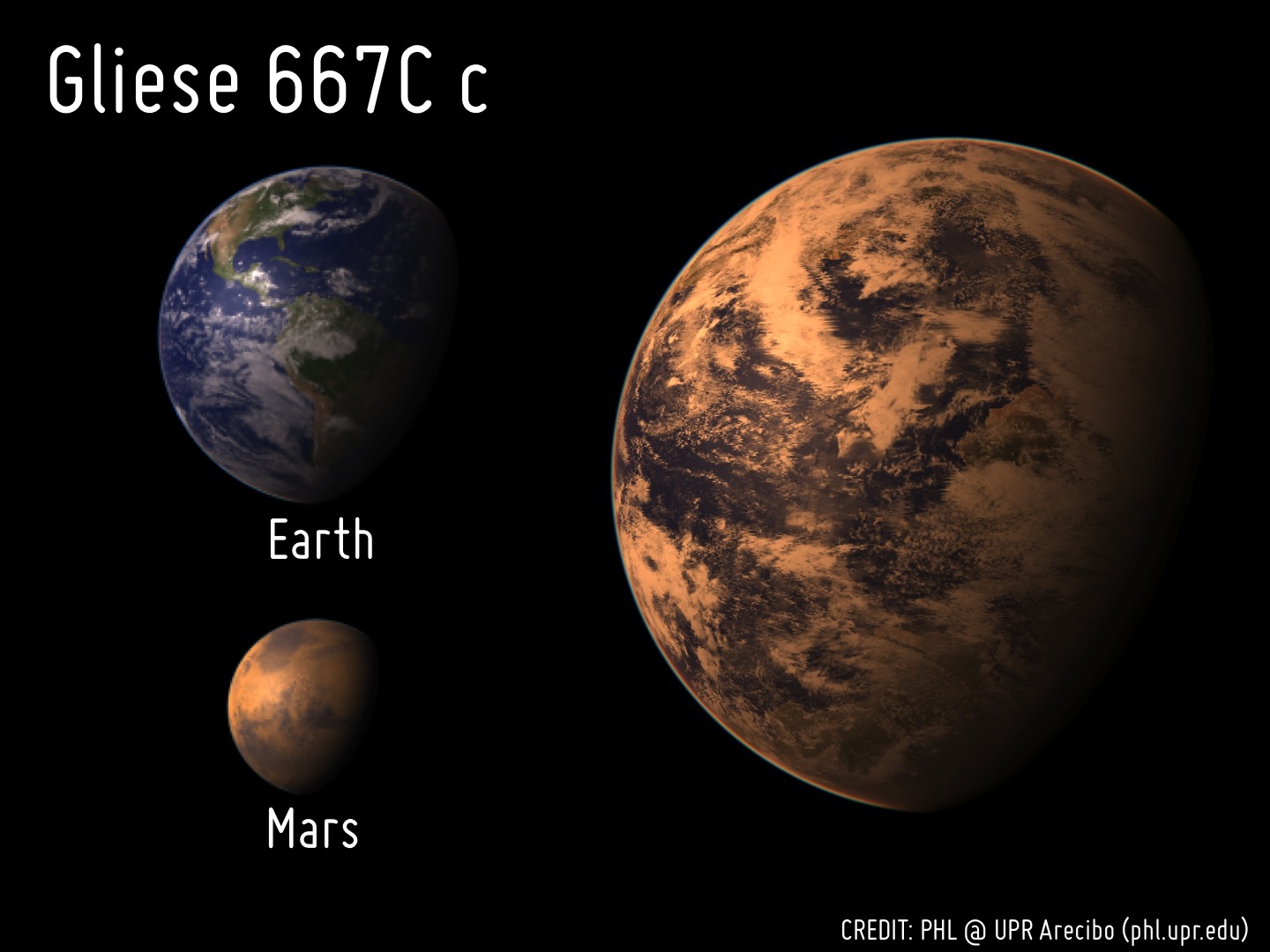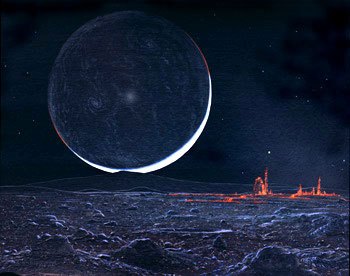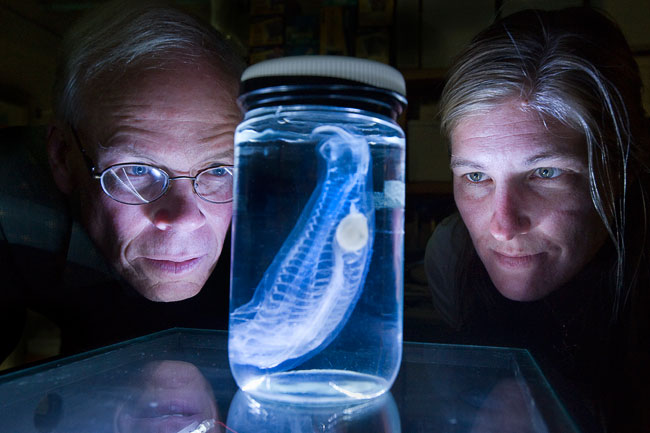Hunting for Alien Worlds (Part 3): The Habitability Debate

At the 2012 Astrobiology Science Conference, Astrobiology Magazine hosted a plenary session titled: “Expanding the Habitable Zone: The Hunt for Exoplanets Now and Into the Future.”
Originally formulated as part of our "Great Debate" series, this panel of exoplanet hunters and thinkers held a lively discussion about some of the most important issues facing the search for and understanding of alien worlds orbiting far-distant stars.
Part One of this series examined the ways exoplanet science is changing today, and Part Two explored the science of habitability. Here is Part Three:
David Grinspoon: Dirk mentioned the possibility of a 5 Earth-mass Super-Earth at the orbit of Mars that might be a habitable planet. Which is interesting that perhaps our notion of the outer edge of the classical habitable zone is too constrained by the fact that we have this wimpy little planet called Mars there, and if we had a real proper big terrestrial planet occupying that position, that we might have a wider view of the habitable zone. The problem with that is of course nobody's been able to solve the problem really well of how you make even early Mars have a warm/wet environment. It's a bit of a puzzle of course, you can't just pump up the CO2 if you have a Super-Earth.
But some recent work that Ray Pierrehumbert presented at ExoClimes showed that in fact if you have a Super-Earth at a Mars-like orbit, it could be habitable in the classical sense, because if you have a very large hydrogen envelope on a cold big Super-Earth, that collision-induced opacity gives you enough warming. So that to me is an example of how we may, with new theoretical developments, be able to expand our notion of the habitable zone. [Planets Large and Small Populate our Galaxy (Infographic)]
However, Ray also pointed out that if life developed on that planet, and if there were methanogens, they would quickly destroy the greenhouse and render the planet uninhabitable in a sort of anti-Gaia effect. So, this also is an example of how there are a lot of subtleties that will perhaps become apparent once we actually start discovering these worlds and trying to understand what we're seeing.
Dirk Schulze-Makuch: David, was it the same thing that the cyanobacteria did to the poor bacteria on early Earth? Right?
Breaking space news, the latest updates on rocket launches, skywatching events and more!
David Grinspoon: Cyanobacteria are very irresponsible planetary stewards.
[Laughter]
Vikki made a really interesting point in her intro about their Earth-over-time project. How do we deal with the fact that we can't help but look for Earths? But of course through most of Earth's history Earth was not an Earth in the sense that we often often think of that. Do we know enough about early Earth? Does that help us because in a certain sense we have more than one example of a known habitable planet because we know enough about early Earth? Or does it hurt us because it limits our ability to even think about the problem because we are looking for something that in fact may be fleeting?
Vikki Meadows: I think looking at the early Earth is a very nice transition from looking at modern Earth where we know a great deal and can learn a great deal, out to exoplanets where we will know very little. And in fact we should not have any preconceptions about what we see with the extrasolar planet population. But looking at the early Earth, you can get some geological and biological constraints, it is difficult, but it allows us to explore an alien habitable environment with the chance of getting more data on it then we can currently get on exoplanets. So, I think that is particularly important.
I also want to point out that the stars in the local solar neighborhood go from just born to ten billion years old or so. There is a very wide range of ages. So the planets around them will also be a very wide range of ages. And so when we finally do find extrasolar planets in the local solar neighborhood that we can study, they will not necessarily be 4.6 billion years old, but they will be a very different stage of evolution. And I think that is one of the most interesting things about looking for local extra-solar planets, is that we get to do not only the comparative planetology in the real sense that this is a different type of world with a different environment, but you also get to see terrestrial planets at different stages of evolution. And so again, the Earth through time feeds into that concept as well.
Eric Ford: One of the challenges I think will be when we ask, “How would you know if you saw a habitable planet?” One of the most common things we appeal to is out-of-equilibrium chemistry, when we pull up something like oxygen or ozone and some other reducing gas. Well, for most of Earth's history that signature wasn't here. And so maybe even if we have an inhabited planet, we see it and we characterize it with spectroscopy, it would be hard to know that it is inhabited.
Sara Seager: That's so true. I would call it [one of] the dirty little secrets that we don't tell you. We are looking forward to the day that we have data, so we will be happy either way. In some cases we'll assign you high probability, like when we see oxygen and it looks just terra-centric, so we could be 99 percent sure that planet has life that is generating that gas. In many other cases we'll just say 50/50, we don't really know. We're working towards having a quantitative understanding as much as possible about which ones could and which ones couldn't.
I know the topic today is not current exoplanet atmosphere observation and theory, but I will tell you one of the most important lessons we're learning is to live with uncertainty. We get to a point where we have limited data and we make interpretations and the best we can do is give you a range of possibilities. And the people in what I call “the real world,” they’re not used to that way of looking at the world. But that may be how it evolves for our generation for habitability. [The Strangest Alien Planets (Gallery)]
Vikki Meadows: Can I just respond to Sara's particular point and Eric's as well, about equilibrium signatures. Those are incredibly valuable because you don't really have to have any a priori sense of what the metabolism is or anything like that. So they're very good general signatures. But you can also do a different type of study, which is to figure out what a new bio-signature might be, by going through the three steps that it takes to generate a bio-signature. Which is to understand a metabolism and the by-products of that metabolism, how that’s pumped into the atmosphere. To understand how those by-products would survive in that atmosphere against the flux from the parent star and against local chemical reactions. And then to look at what remains, what builds up in the atmosphere and whether or not that's detectable by a spectrometer onboard a telescope.
So we can actually do those studies, the VPL does those kinds of studies, and the recent work done by Shawn Domagal-Goldman looking at an anoxic atmosphere, the classic early Earth atmosphere with a sulphur bio-signature at the bottom of it, and finding that in fact, counter-intuitively, the sign of life was ethane. This was a sulphur bio-sphere, because methyl radicals come off a lot of these biogenic sulphur molecules and ended up producing more ethane in the atmosphere than you get from photolysis of methane alone. So it may be possible to start to learn about some of these signatures that are not just equilibrium bio-signatures, but at least to run through a series of possibilities for different metabolisms.
Sara Seager: The question is, are there any other pathways to form that excess ethane?
Vikki Meadows: Yes, by photolysis of methane.
Sara Seager: I was just trying to push you to say whether you would be 100 percent sure if you saw this excess ethane. Or whether it would be kind of sure, but not 100 percent.
Vikki Meadows: But that brings me to another sort of paradigm of bio-signatures: you must understand the context of the planetary environment in which you see it. And that will allow you to try and determine whether there is enough ethane in the system, say from geothermal activity that could produce the signature versus life. So you do have to learn a little bit more about the environment.
Dirk Schulze-Makuch: Yeah, that's a very good point. Because in some way you have this issue with Titan. Because you have a lot of methane, and the question is, “Where does the methane come from?” So the traditional view is from a formation theory of Titan. But there is another view, it could actually be an end product of some kind of a metabolic process.
On the other hand, you can envision a scenario where you have a lot of oxygen in the atmosphere but it is not a bio-signature. Just imagine Europa and you have a huge meteorite slamming into Europa, basically melting all the ice, then you have a water atmosphere, you have this huge radiation from Jupiter, the hydrogen escapes to space and, voila, you have an oxygen atmosphere, but you may have no life whatsoever. So we have to really put it into context.
And one more point. Yes liquid water is important: we, our organisms, our life on Earth learned to live with it. But that is not necessarily because water is this greatly wonderful solvent. It has its problems. If you come from Washington State where I am right now, there are no leaves on the trees. Why is that? Because the volume of water expands when it freezes and it tears up the cellular membranes. And so that doesn't work. And life on Earth adapted to live with it. In winter there are no leaves on the trees, no grass is growing, and in summer everything starts blooming again. The point being is that water is not that great, but Earth had a lot of water in it, and life on Earth had no other choice than to adapt to water on our planet. If you are on a very different planet with very different conditions, the result could have been very different from that. And the real challenge is to see what is universal with life, and what is really adaptation of life to Earth's conditions.
Eric Ford: We heard yesterday about how important it was when we arrive on Mars to understand the context of what you are measuring. And it is similar to some of the points you have made. But the challenges as astronomers is that there are only some things that we can do for you. And the quality of data that you are going to get is going to get very difficult to understand anywhere near the level of contexts that some planetary scientists are used to. So, mass, density, radius, maybe a little bit about the fraction that’s in rock, ice, gas. Maybe a few atmospheric signatures, but those will be very difficult to get. And that is an optimistic view of what you'll have to work with. And so one of the challenges will be taking what we are able to measure and then relating it to what we'd like to know, even though there are so many other missing variables.
You can watch the full "Great Exoplanet Debate" here: https://connect.arc.nasa.gov/p68qflmgnhk/?launcher=false&fcsContent=true&pbMode=normal
This story was provided by Astrobiology Magazine, a web-based publication sponsored by the NASA astrobiology program.

Space.com is the premier source of space exploration, innovation and astronomy news, chronicling (and celebrating) humanity's ongoing expansion across the final frontier. Originally founded in 1999, Space.com is, and always has been, the passion of writers and editors who are space fans and also trained journalists. Our current news team consists of Editor-in-Chief Tariq Malik; Editor Hanneke Weitering, Senior Space Writer Mike Wall; Senior Writer Meghan Bartels; Senior Writer Chelsea Gohd, Senior Writer Tereza Pultarova and Staff Writer Alexander Cox, focusing on e-commerce. Senior Producer Steve Spaleta oversees our space videos, with Diana Whitcroft as our Social Media Editor.




